Solar
Solar
Battery Storage
Battery Storage
Battery Storage
EV Charger
EV Charger
EV Charger
Heartbeat
Smart Energy Manager
Heartbeat
About Us
About Us
Learn
Featured Articles
Sizing Up A System
Finance & Rebates
Learn
Now servicing New South Wales, Victoria, Queensland and South Australia
Request Pricing
With everything that is happening in the world at the moment, it’s no surprise that a lot of people are rushing to install a solar system.
Here are some of the reasons why people are looking at a solar power installation at the moment:
Power prices are skyrocketing – this in itself is enough of a reason for many households
Many people are now working from home or are keeping the kids home from school. Solar can help stop your power bills from sky-rocketing
Solar panel prices are at record lows, however raw material prices are skyrocketing and so price rises are on the way
Very low-interest rates on ‘safer’ investments such as bonds, often at rates much lower than inflation
Supply chains may be disrupted soon… if you are thinking about getting solar this year, think about doing it now before any stock shortages affect both prices and stock
Local, local, local… Keep the local economy ticking over and help small businesses survive.
And perhaps most importantly, solar is a safe and attractive investment compared to other options. As long as the sun is shining and you are using electricity, solar can save you thousands of dollars a year on your power bills.
So let’s get into the details to see just how good solar can be as an investment:
There is a lot happening in the markets and it’s difficult to predict what will happen in the future. Investments that seemed like a good idea before 2020 are now becoming more uncertain, and who knows how long this period of instability will last.
Solar power is an investment that can generate great returns year after year. In fact, the return on your money can be so good it will often make good financial sense to fill your roof with panels, irrespective of how much you pay for your power bills. We call this over-sizing your solar system:
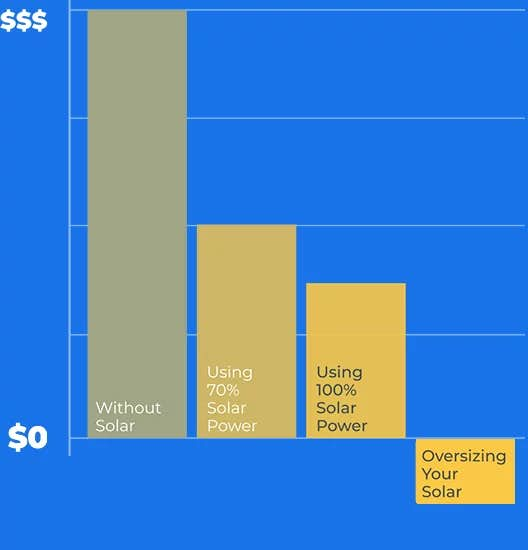
More than ever before, we are talking to people who are looking for safe havens for their money. Many people have closed positions on the stock market and are looking for ways to safely invest some money yet still see a decent return.
Although having your money in a cash/savings account can be considered a safe haven, interest rates are so low that most people are seeing returns that are actually less than inflation. In other words, they are losing money, even on long-term investments such as a 10-year bond.
If you look at the potential return on investment on a large solar system compared to a 10-year bond with a 1% return, it’s easy to see why so many people are installing large solar power systems:
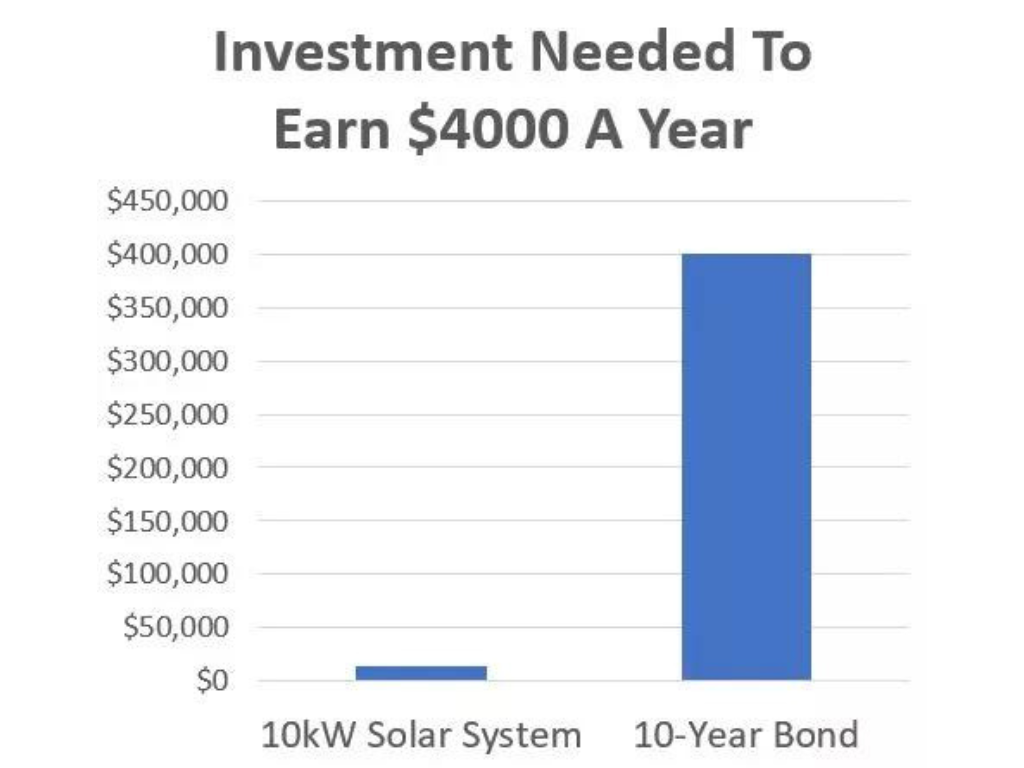
Other people are scrambling to reduce costs as an uncertain future awaits. If you have money now, it may make sense to use it to reduce your future costs. This is especially true for people who are about to retire.
Paying a power bill is no longer a necessity. You can invest money into a good quality solar system and completely replace your power bill, plus the solar system can pay for itself in as little as 3-5 years.
Reducing your main household expenses actually makes good sense in the best of times, but at the moment we have a lot of people investing in solar power and/or battery storage rather than, for example, building a new deck or other common home improvement projects.
We had one customer tell us recently that he and his wife decided to install solar power to replace their power bill using money they were planning to spend on a family holiday to Europe. Probably a smart move with the way things are panning out.
Again, for a lot of people, getting rid of your power bill for the next 20-25 years is a really attractive proposition for money that would otherwise be sitting in a cash account.
Let’s get into the numbers to see why so many people are buying large solar systems at the moment, especially in such uncertain times:
A solar system in Sydney will output around 4 times its size, so a 10kW solar system will output around 40kWh a day on average, but it will do more in summer and less in winter:
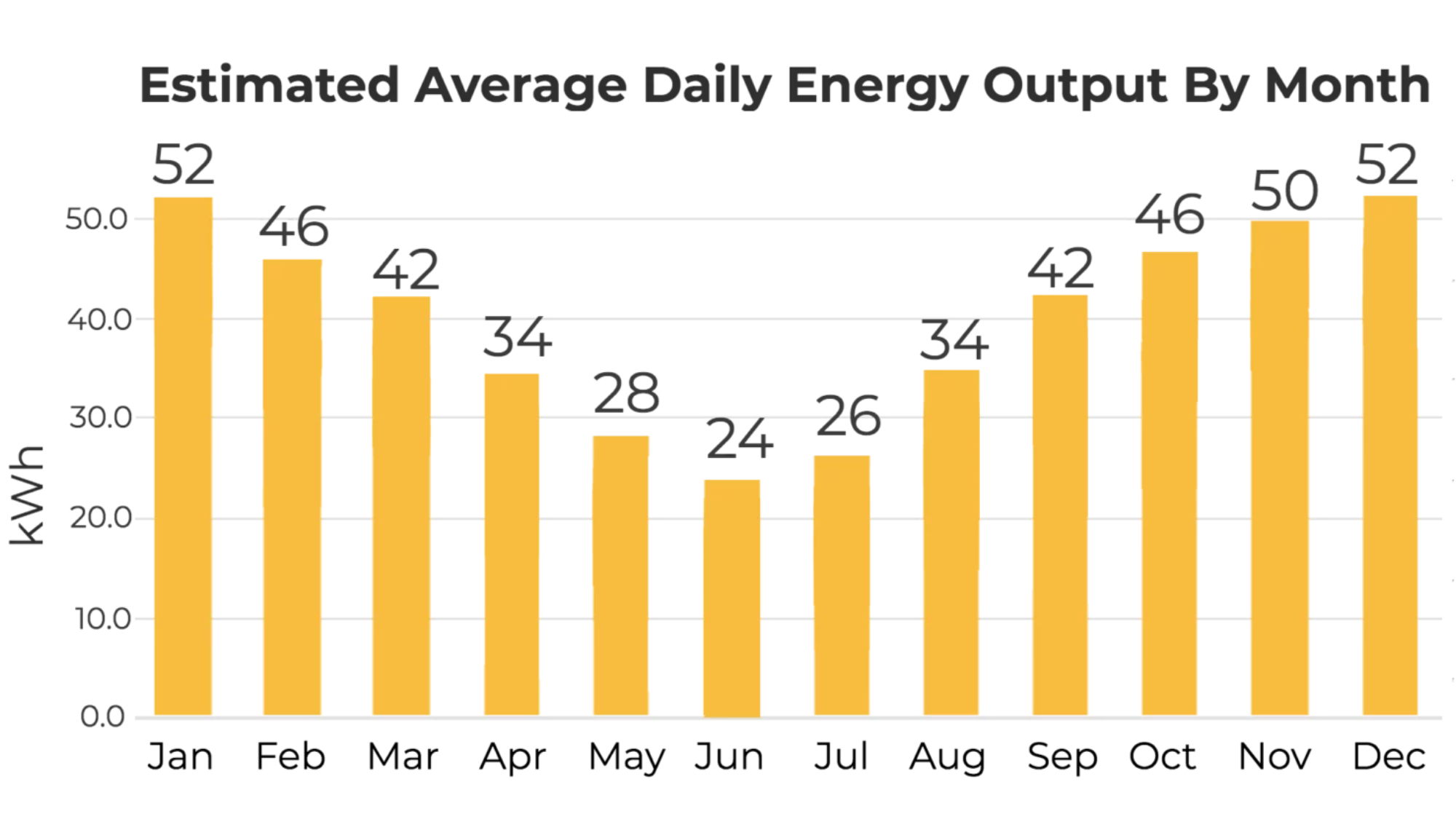
If you have a power bill handy, you could compare this to your own daily energy usage, but for now let’s assume you use around 30kWh a day, with 20kWh used during the daytime and 10kWh during the evening/nighttime. This would mean on average you are only able to use 50% of the solar power from a 10kW system as it is generated, typically much lower than what we’d recommend in the past.
20kWh of usage during the daytime looks like the graph below, anything below the line is solar power used in the home, everything above the line is solar power that is sent to the grid:
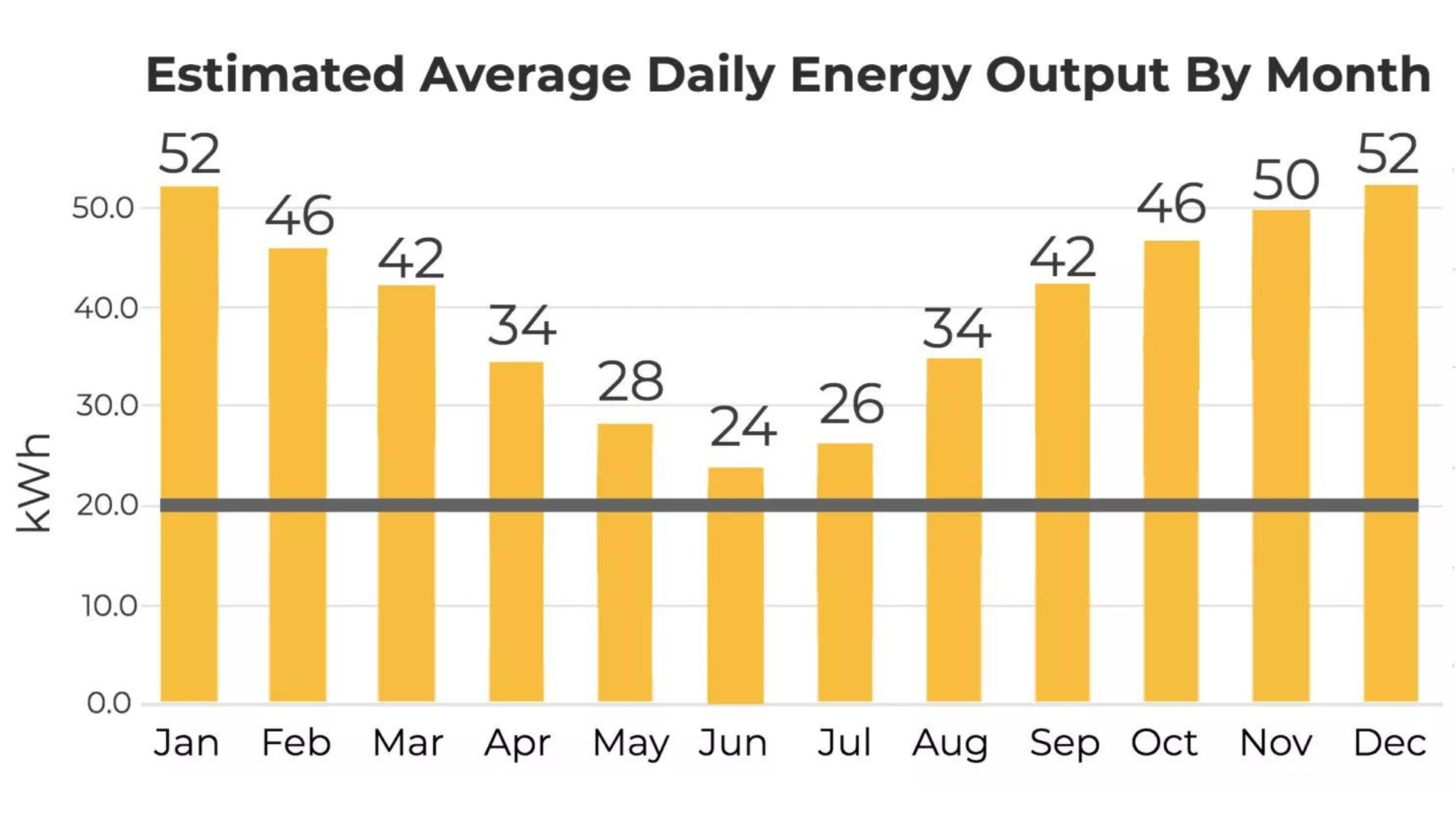
You can see the system is sized up so that even in the middle of winter if the weather is nice your home will mostly be powered by solar.
It turns out a lot of households increase their energy usage in summer to run air conditioning and/or pool pumps, which is great as it means they are making the most of the solar power as it is generated.
Based on the typical cost of electricity now at around 30 cents a kWh, and a daily supply charge of 86 cents, the total yearly benefit of a 10kW solar system using only half of the solar power is over $3,500. This also factors in a feed-in tariff of 12 cents per kWh, which is available from the main energy retailers (contact us for more info).
If you were to use all of the solar power a 10kW system generated, it could save you well over $4000 a year.
We find a lot of our customers use around 70% of the solar power as it is generated, which gives you a saving of about $4000 in this example (using round numbers).
Use 50% of the solar power: Save $3700
Use 70% of the solar power: Save around $4000
Use 100% of the solar power: Save $4300
Again, this is the direct saving on your power bill from not buying electricity from the grid, plus the money you earn as a feed-in tariff for any solar power you don’t use.
So, here’s the key question for you – if you could save around $4000 a year, how much would you be willing to pay for a solar system?
Based on a 1% return you can now get from a 10-year bond, the answer would be an eye-watering $400,000. This would also lock in a loss because of inflation.
Based on a 5% return on your money, which I’m sure a lot of people would be delighted with based on what’s happening in the world right now, that would be $80,000; invest $80,000 and get a return of $4000 a year, you’ve got a 5% return on your money annually.
But of course, solar doesn’t cost $80,000, and it certainly doesn’t cost $400,000!
In fact, you could spend a fraction of $80,000 and not only get a top-of-the-range 10kW system, but you could also get battery storage with blackout protection, so no matter what happens out there in the world, you can keep the lights on, the modem on, the phones charged, Netflix running and whatever else you need when the grid goes down, whether from big summer storms like we have seen in recent years, or a zombie apocalypse.
Furthermore, throw in rising power costs. Even if you just assume power prices will increase by 3% because of inflation, you are set to save up to and over $100,000 over the 25-year life of the system. Not bad given the uncertainty in the markets at the moment!
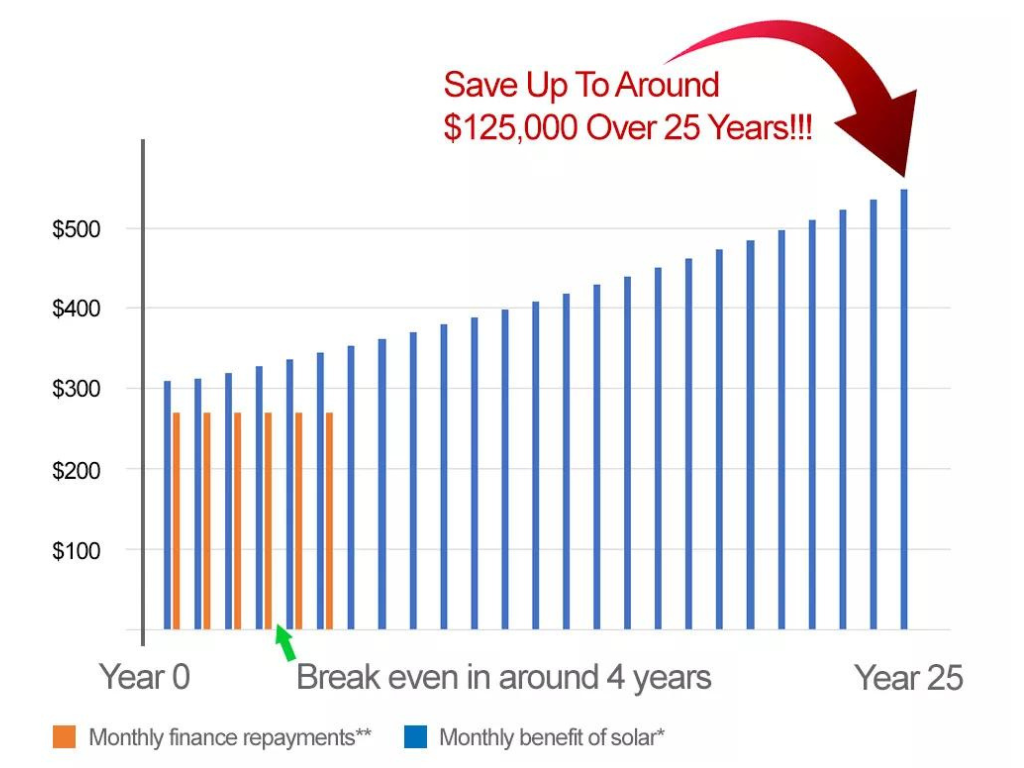
This graph also includes indicative monthly repayments if you decide to finance part of your investment. As you can see in this example, it’s possible for your savings to be larger than the monthly repayments. Contact us today for more information about financing your system if that’s something you’d like to look into.
We currently have reduced pricing on our Smart Solar Systems. For more information and personalised pricing, request a personalised quote below.
Our solar experts will help you find the right system for your home.

Get all the right information before installing a solar power system for your home.
